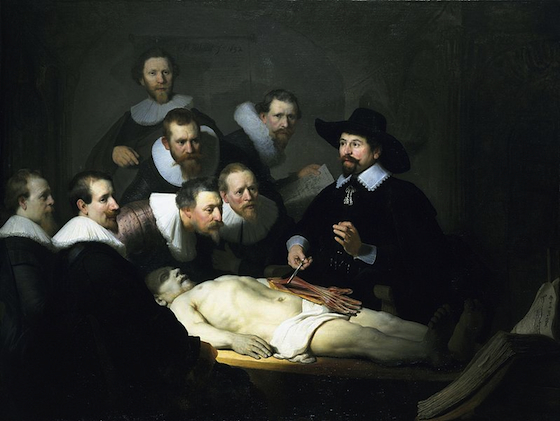For my TOW this week I decided to do The Anatomy
Lesson of Dr Nicolaes Tulp by Rembrandt. This piece was made my Rembrandt who
was famous painter during the 1600’s. This painting was the one that grew his
reputation as a painted and what made him as famous as he was at the time.
This
oil painting depicts Dr. Nicolaes Tulp who was a well know Dutch surgeon. In
the painting he is giving a lecture to a class where he is dissecting the forearm in order to show how the muscle system works. The men around Dr. Nicolaes
Tulp are students. Rembrandt painted this painting in order to celebrate Dr. Nicolaes
and his accomplishments, but to also show the psychological aspect of death.
This was his overall purpose and it can be seen from the faces of the students.
In
the painting one of the first things you notice is the dead body. Rembrandt
purposely made this bright in order to show it. Then the other bright objects
are the faces of the people around the body. Each student has a different
facial expression going on and this is meant to represent the different way
people perceive death. For instance one man is hunched over and studying it
hard while other can’t even look at the dead body. All of these are different
because everyone perceives death in a different way. From this, Rembrandt wants
to convey to a surgeons guild (who was the original audience for this piece) just
how fragile the life of a humans is and how others perceive death. With his use
of dark colors and facial expressions, Rembrandt expressed this purpose well.

